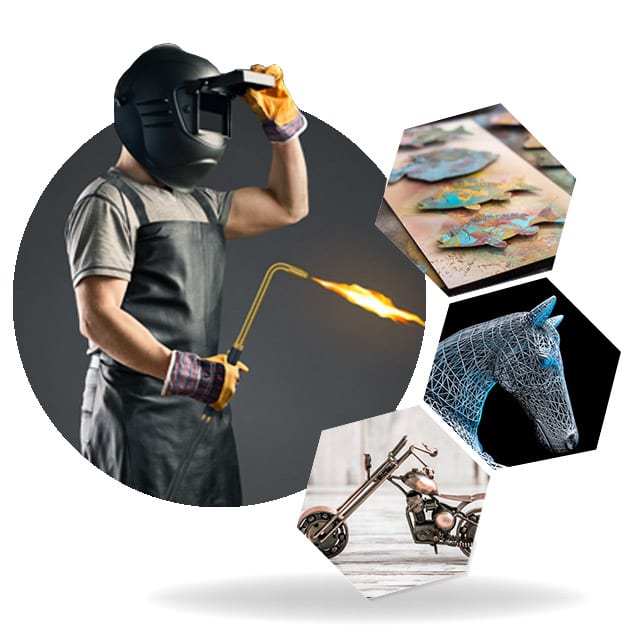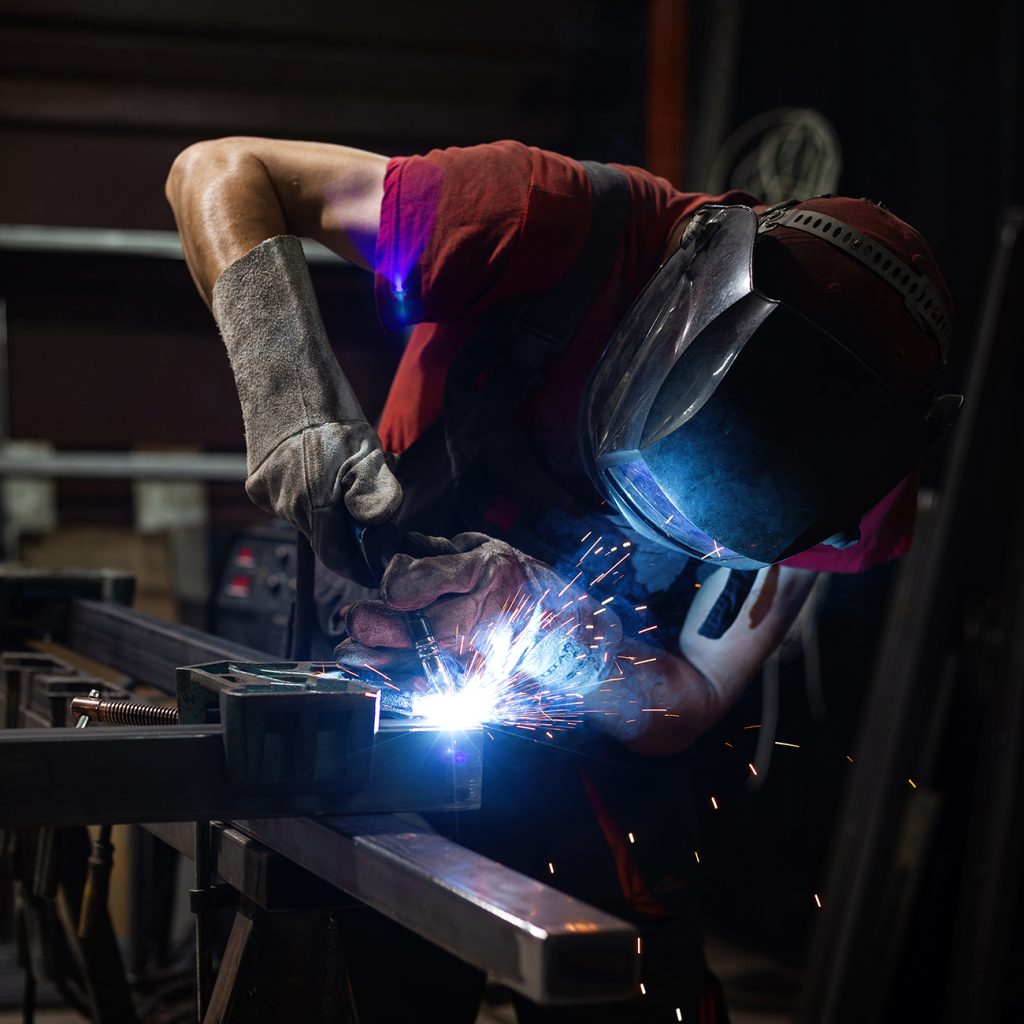Usual Welding Repair Service Issues and Exactly How to Address Them Successfully
Welding repair work typically run into a variety of problems that can endanger the stability of the final item. Common issues include inadequate penetration, porosity, and imbalance, amongst others. Each problem offers distinct difficulties that need particular approaches for resolution. Understanding these issues is essential for welders intending to enhance their results and abilities. This discussion will certainly explore these typical welding fixing concerns and effective approaches to address them.
Poor Infiltration
Poor penetration happens when the weld steel stops working to completely fuse with the base material, resulting in weak joints and possible structural failures. This issue often comes from not enough warm input, incorrect electrode angle, or inappropriate welding speed. Welders may experience inadequate infiltration due to a mistake of the necessary specifications for a particular material thickness or type. In addition, contamination on the base product's surface area can impede reliable bonding, worsening the trouble. To attend to poor penetration, welders ought to guarantee suitable setups on their tools and maintain a clean work surface. Normal evaluation of welds is suggested to determine any kind of deficiencies early, enabling for timely improvements and the prevention of jeopardized architectural integrity in bonded assemblies.
Porosity
Porosity is a typical issue in bonded joints that shows up as tiny gas bubbles trapped within the weld steel. This defect can jeopardize the honesty of the weld, resulting in reduced toughness and potential failure under tension. Belgrade Fabrication. Porosity normally arises from contamination, dampness, or incorrect welding strategies, which enable gases to get away right into the liquified weld swimming pool. To deal with porosity, welders ought to assure correct surface area preparation, keep a tidy working setting, and use appropriate welding parameters. In addition, choosing the ideal filler material and protecting gas can minimize gas entrapment. Routine evaluation and testing of welds can help identify porosity early, guaranteeing prompt restorative activities are taken, consequently maintaining the high quality and integrity of the bonded framework
Imbalance
Imbalance in welding can arise from various factors, consisting of improper configuration and thermal development. Recognizing the source is essential for efficient resolution. Several correction strategies are available to realign parts and assure structural stability.
Reasons for Imbalance
Welding misalignment typically comes from a variety of underlying issues that can compromise structural stability. One key reason is improper fit-up of elements prior to welding, which can cause spaces and uneven surface areas. Variants in thermal expansion during the welding process can also result in distortion, especially if the materials being signed up with have different coefficients of expansion. In addition, inadequate securing and fixturing may fail to hold components firmly in area, leading to activity throughout welding. Improperly kept tools, including welding makers and devices, may present variances in the weld grain, further adding to imbalance. Driver error, stemming from not enough training or experience, can also play a substantial duty in producing misaligned welds.

Correction Strategies Offered
Resolving imbalance effectively requires a combination of corrective techniques customized to the specific issues handy. One usual method is the usage of jigs or fixtures to hold components in the right placement throughout welding, guaranteeing regular positioning. In addition, pre-heating the products can help in reducing distortion and improve fit-up. For considerable imbalance, mechanical realignment methods, such as using hydraulic jacks or clamps, can be used to fix the placement before welding. Post-weld warmth therapy might additionally be needed to alleviate anxieties brought on by misalignment. Cautious assessment and adjustment throughout the arrangement phase can avoid misalignment issues from becoming considerable problems, promoting a smoother welding process and enhancing overall structural stability.
Distortion
Distortion is a typical obstacle in welding that can arise from numerous aspects, consisting of irregular heating and air conditioning. Comprehending the root causes of distortion is vital for carrying out efficient prevention techniques. Addressing this concern not just enhances structural stability however likewise boosts the overall high quality of the weld.
Root causes of Distortion
When based on the intense heat of welding, materials usually go through adjustments that can result in distortion. This sensation primarily develops from thermal growth and contraction during the welding procedure. As the weld area warms up, the material broadens; upon cooling, it acquires, which can produce inner tensions. In addition, irregular heating throughout a work surface can worsen these tensions, causing bending or bending. The type of material also plays a considerable role; steels with varying thermal conductivity and coefficients of growth may respond in different ways, leading to uncertain distortions. Furthermore, inadequate joint style and poor fixturing can add to misalignment throughout welding, increasing the chance of distortion. Understanding these causes is important for reliable welding fixing and avoidance methods.
Avoidance Techniques
Reliable avoidance strategies for distortion throughout welding focus on controlling warmth input and making sure proper joint layout. Maintaining a regular warmth input aids to reduce thermal expansion and tightening, which can result in distortion. Using methods such as pre-heating the workpiece can additionally decrease the temperature gradient, promoting uniform heating. In addition, choosing appropriate joint designs, such as T-joints or lap joints, can improve stability and reduce tension concentrations. Executing correct fixturing to protect the work surfaces in position even more aids in preserving positioning throughout the welding procedure. Staggered welding series can disperse warmth extra equally, preventing local distortion. By using these techniques, welders can greatly decrease the chance of distortion and improve the general high quality of their welds.
Cracking
Cracking is a typical issue encountered in welding fixings, typically arising from various factors such as incorrect air conditioning rates, product option, or inadequate joint prep work. The event of fractures can greatly endanger the honesty of the weld, causing possible failings during operation. To resolve this concern, welders need to initially assess the root causes, ensuring that products are suitable and appropriately picked for the details application. Additionally, regulating the cooling price throughout the welding process is essential; fast air conditioning can generate stress and cause splitting. Appropriate joint layout and prep work additionally contribute to minimizing the threat. Executing these techniques can improve weld high quality and longevity, eventually decreasing the chance of splitting in finished weldments.

Incomplete Combination
A substantial concern in welding repairs is incomplete combination, which occurs when the weld metal does not appropriately bond with the base material or previous weld passes - Montana Mobile Welding and Repair Belgrade Welding. This issue can lead to weaknesses in the joint, possibly compromising the honesty of the welded framework. Elements contributing to insufficient fusion include not enough warm input, improper welding technique, and contamination of the surfaces being signed up with. To address this problem properly, welders should ensure appropriate pre-weld cleaning and surface area preparation, along with change their welding criteria to accomplish sufficient penetration and combination. Normal examination throughout the welding procedure can additionally assist recognize insufficient combination early, permitting prompt rehabilitative steps to enhance the general high quality of the weld
Overheating
While welding fixings can enhance structural honesty, overheating presents a substantial difficulty that can cause material degradation. Excessive heat throughout welding can change the mechanical properties of metals, leading to lowered toughness, raised brittleness, and bending. This sensation is specifically essential in high-stress applications where architectural dependability is vital. Identifying overheating can involve visual examinations for staining or distortion, as well as checking temperature during the welding process. To alleviate the dangers connected with overheating, welders need to use appropriate methods, such as regulating warmth input, adjusting travel click here rate, and utilizing suitable filler products. Furthermore, implementing pre- and post-weld warm treatments can help bring back material buildings and boost the overall quality of the repair work, ensuring long-term efficiency and safety and security.
Frequently Asked Concerns
What Are the Usual Indications of a Welding Flaw?

Exactly How Can I Check My Welds for Quality?
To evaluate welds for high quality, one can make use of aesthetic inspections, ultrasonic screening, and radiographic methods. Each method ensures architectural integrity, identifies flaws, and validates adherence to defined requirements, ultimately improving the reliability of the welded joints.
What Security Safety Measures Should I Take While Welding?
When welding, one ought to prioritize security by wearing suitable individual safety tools, ensuring correct air flow, protecting flammable materials away, keeping a tidy work area, and understanding surroundings to stop crashes and injuries.
Can I Fix a Weld Without Redoing the Entire Joint?
Fixing a weld without redesigning the entire joint is possible, depending upon the damage (Montana Mobile Welding and Repair Welding). Methods such as grinding, including filler material, or utilizing a welding procedure can properly address details imperfections while maintaining the surrounding framework
What Devices Are Essential for Efficient Welding Repair Works?
Vital devices for effective welding fixings consist of a welding maker, cord brush, mill, protective equipment, clamps, and filler materials. Each device plays a vital function in making certain top quality and safety throughout the repair work procedure. Porosity commonly arises from contamination, wetness, or incorrect welding methods, which enable gases to leave right into the liquified weld pool. Badly conserved devices, consisting of welding equipments and devices, may present variances in the weld bead, additional adding to imbalance. When subjected to the intense warm of welding, products commonly go through modifications that can lead to distortion. Fracturing is an usual problem come across in welding repair services, usually resulting from numerous elements such as inappropriate cooling prices, product option, or poor joint prep work. A significant problem in welding repair work is insufficient blend, which happens when the weld steel does not effectively bond with the base material or previous weld passes.